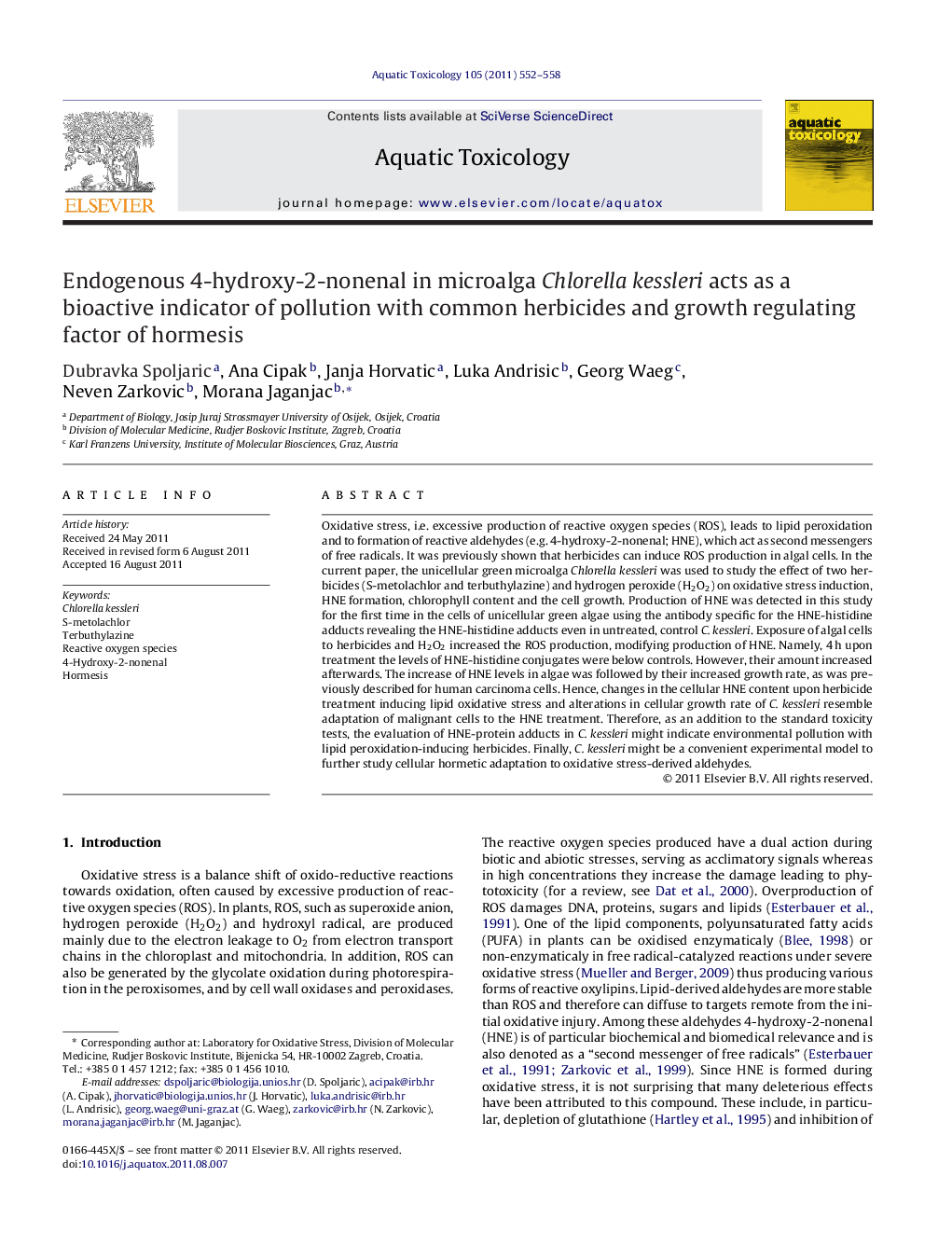| کد مقاله | کد نشریه | سال انتشار | مقاله انگلیسی | نسخه تمام متن |
|---|---|---|---|---|
| 4529842 | 1625982 | 2011 | 7 صفحه PDF | دانلود رایگان |

Oxidative stress, i.e. excessive production of reactive oxygen species (ROS), leads to lipid peroxidation and to formation of reactive aldehydes (e.g. 4-hydroxy-2-nonenal; HNE), which act as second messengers of free radicals. It was previously shown that herbicides can induce ROS production in algal cells. In the current paper, the unicellular green microalga Chlorella kessleri was used to study the effect of two herbicides (S-metolachlor and terbuthylazine) and hydrogen peroxide (H2O2) on oxidative stress induction, HNE formation, chlorophyll content and the cell growth. Production of HNE was detected in this study for the first time in the cells of unicellular green algae using the antibody specific for the HNE-histidine adducts revealing the HNE-histidine adducts even in untreated, control C. kessleri. Exposure of algal cells to herbicides and H2O2 increased the ROS production, modifying production of HNE. Namely, 4 h upon treatment the levels of HNE-histidine conjugates were below controls. However, their amount increased afterwards. The increase of HNE levels in algae was followed by their increased growth rate, as was previously described for human carcinoma cells. Hence, changes in the cellular HNE content upon herbicide treatment inducing lipid oxidative stress and alterations in cellular growth rate of C. kessleri resemble adaptation of malignant cells to the HNE treatment. Therefore, as an addition to the standard toxicity tests, the evaluation of HNE-protein adducts in C. kessleri might indicate environmental pollution with lipid peroxidation-inducing herbicides. Finally, C. kessleri might be a convenient experimental model to further study cellular hormetic adaptation to oxidative stress-derived aldehydes.
► Herbicides enhance ROS production in algal cells and modify the production of HNE.
► Evaluation of HNE adducts in Chlorella kessleri might indicate environmental pollution.
► New model to study cellular hormetic adaptation to oxidative stress-derived aldehydes.
Journal: Aquatic Toxicology - Volume 105, Issues 3–4, October 2011, Pages 552–558